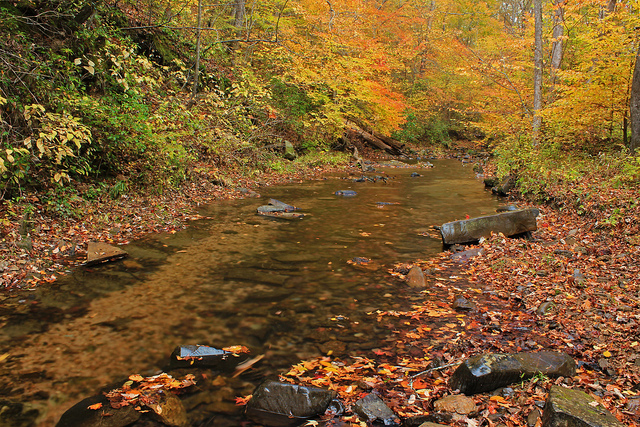Newly Published: Comparing Hydrologic Models for Ecological Flows and Water Availability

The article, “A comparison of hydrologic models for ecological flows and water availability“, just published, in the journal of Ecohydrology was funded by the Southeast Climate Science Center to help resource managers decide which hydrologic model to use in forecasting streamflow in the southeast. The publication is based on a larger SE CSC science funded project, Hydrological modeling for flow-ecology science in the Southeastern United States.
The authors, Peter V. Caldwell (USDA, Forest Service), Jonathan G. Kennen (USGS), Ge Sun (USDA, Forest Service), et al, found that there was a lack in comprehensive model comparison studies that illustrate the differences in streamflow predictions among model applications developed to answer management questions. These scientists then set out to rectify this problem through the comparison and calibration of varying streamflow prediction models in five sites in the Southeastern United States. Their results indicated that no one model was superior to any of the others, from the simplest to the most complex, in each of these sites. For more information on this study please read the abstract below and the full article found here.
Abstract
Robust hydrologic models are needed to help manage water resources for healthy aquatic ecosystems and reliable water supplies for people, but there is a lack of comprehensive model comparison studies that quantify differences in streamflow predictions among model applications developed to answer management questions. We assessed differences in daily streamflow predictions by four fine-scale models and two regional-scale monthly time step models by comparing model fit statistics and bias in ecologically relevant flow statistics (ERFSs) at five sites in the Southeastern USA. Models were calibrated to different extents, including uncalibrated (level A), calibrated to a downstream site (level B), calibrated specifically for the site (level C) and calibrated for the site with adjusted precipitation and temperature inputs (level D). All models generally captured the magnitude and variability of observed streamflows at the five study sites, and increasing level of model calibration generally improved performance. All models had at least 1 of 14 ERFSs falling outside a +/−30% range of hydrologic uncertainty at every site, and ERFSs related to low flows were frequently over-predicted. Our results do not indicate that any specific hydrologic model is superior to the others evaluated at all sites and for all measures of model performance. Instead, we provide evidence that (1) model performance is as likely to be related to calibration strategy as it is to model structure and (2) simple, regional-scale models have comparable performance to the more complex, fine-scale models at a monthly time step.
Read more.